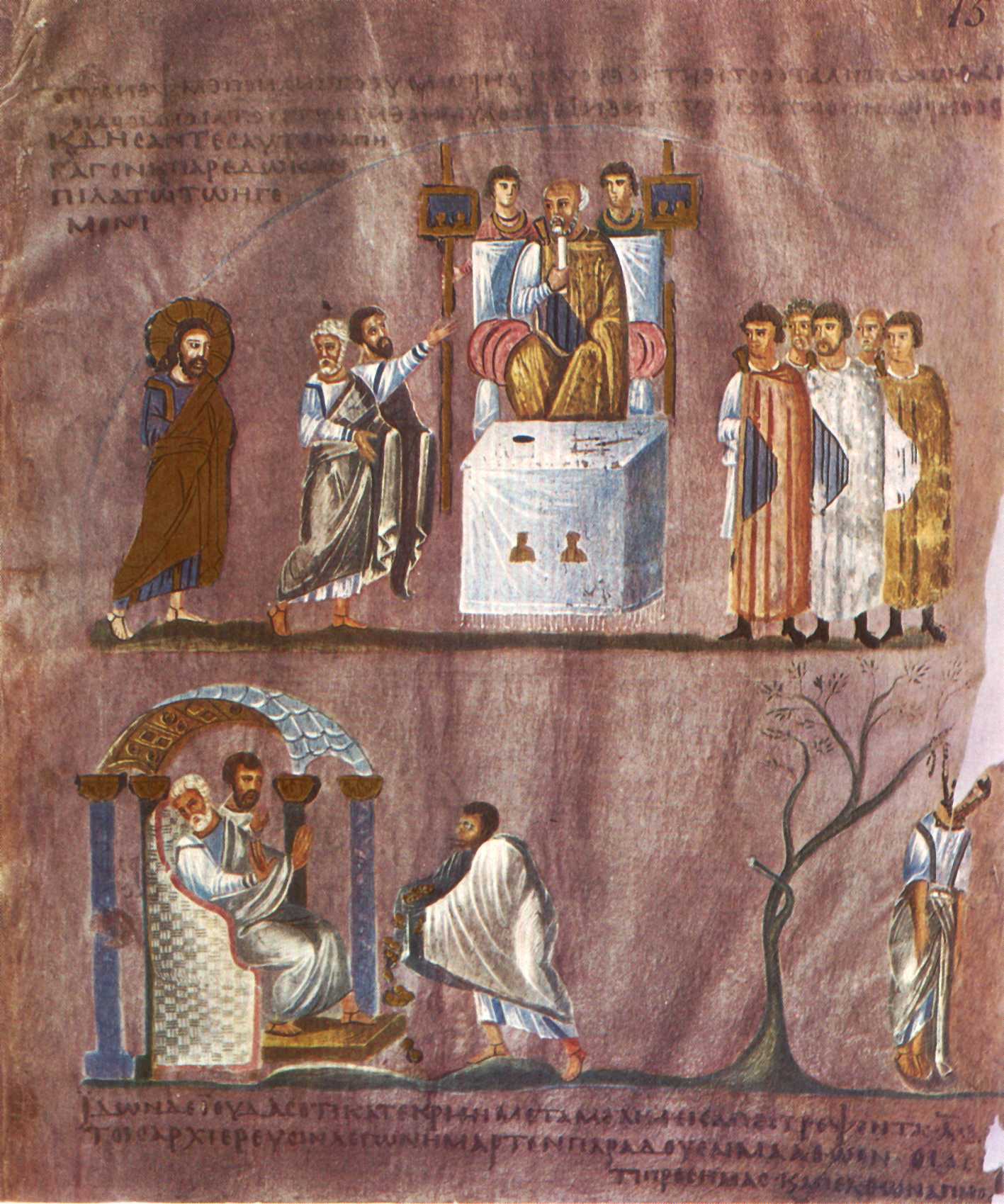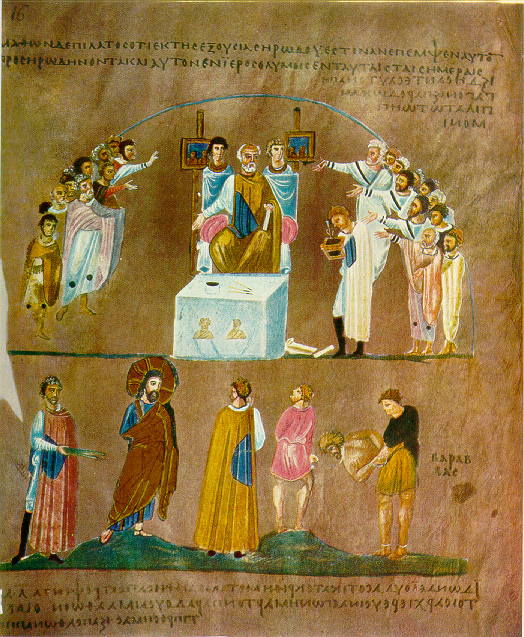

The Trial Before Pilate
Circa 550
Rossano Gospels, 8r and 8v
(Pages numbered "15" and "16" by a later hand)
Rossano Cathedral, Italy
The Rossano Gospels are the oldest known illustrated manuscript of the Gospels. These two pages from the manuscript illustrate the trial of Jesus before Pilate.
Although the manuscript is from the mid-6th century, Loerke shows how the two pages picture the trial of Jesus as a judicial proceeding of the 5th-century empire. Pilate sits on a throne holding the scroll that was at the time the mandatory symbol of a judge's reception of authority from the Emperor, who is portrayed in pairs of busts on the tablecloth and the standards that soldiers hold behind Pilate, signifying that the Emperor is present virtually through his image. The pens and ink pot on the table refer to the requirement in 4th-century law that a judge's decisions are not valid unless put into writing, and the scribe with his stylus and tablet is there to keep a record of the proceedings.
Loerke further posits that a third page has been removed that pictured the conclusion of the trial with the washing of the hands and that all three pages were copied from paintings on the walls of an apse, quite likely the one in the building believed by early pilgrims to be the actual pretorium where Jesus was tried. Such an origin would explain the unusual prominence of Pilate in the miniatures.
The sequence of images and texts on these pages follows the accounts of the trial in the four gospels. First, the Greek inscription at the top of 8r says, "And when they had bound him they led him away to Pilate the Governor," a paraphrase of Matthew 27:2.1 In the image Jesus follows after the chief priest Caiaphas and his son-in-law Annas, whose raised arm signifies his words to Pilate. The inscription notwithstanding, Jesus is emphatically not bound and not being led. He enters firm of foot into the space defined by the blue arc. Except for Annas and one soldier, all eyes are on him.
The next step in the narrative is the account of Judas's suicide that Matthew interpolates into the narrative at this point (Matthew 27:3-5). Folio 8r sets this forth both in the image and in the Greek text at the bottom: "When Judas saw that he was condemned, he repented and brought back the thirty pieces of silver to the chief priests, saying, 'I have sinned in betraying innocent blood.' They said, 'What is that to us?' And he went and hanged himself."
The upper register of 8v starts with an inscription summarizing Luke 23:7, the next moment in the narrative: "Pilate, learning that he is from Herod's jurisdiction, sent him to Herod, who was himself in Jerusalem."
Below the inscription we see the next step, Pilate's unsuccessful attempts to appease the crowd and the Jewish authorities, first declaring that "I find this man not guilty" (Luke 23:4) and then suggesting that Jesus be set free in place of the murderer Barabbas (Matthew 27:15-18). In the upper register the crowd is on the left and the Jewish authorities on the right. The lower register, which presents the choice between Jesus and Barabbas, again emphasizes Jesus' calm firmness. He stands calm, erect, and a little apart from the other figures, in contrast with Barabbas, who is led in bent over and in chains.
Finally, if Loerke is correct, a third page would picture Pilate washing his hands.
Read more about images of Jesus on Trial.
Source: this page at Wikimedia Commons